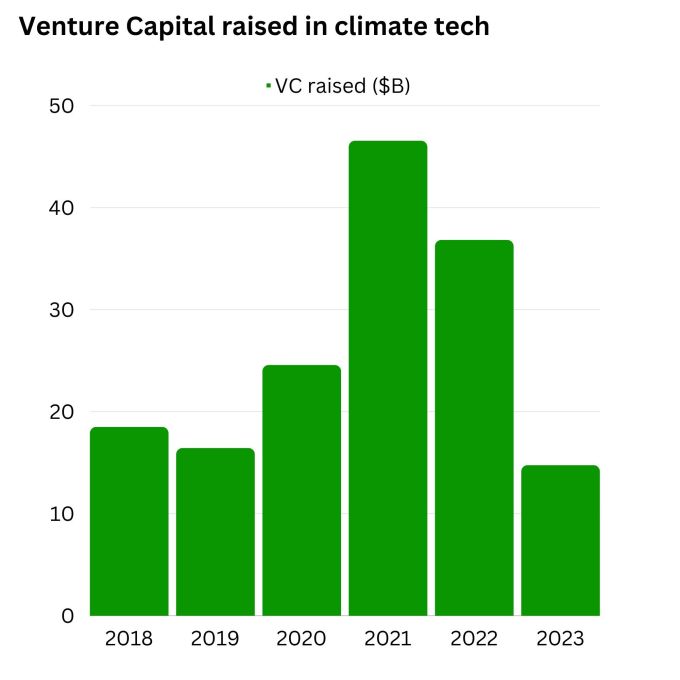In the race to reach carbon neutrality, many businesses are looking for various ways to cut emissions, whether through limiting high-carbon transit, becoming more energy efficient at home, or reducing our consumption of meat.
But there are some things that individual consumers can do that don’t require massive lifestyle changes, making them more likely options for regular folks who want to help the planet but don’t want to give up their holiday travel schedule.
One such method is reducing food waste. It’s no small problem: According to Feeding America, in the U.S. alone, around 40% of the food supply is wasted, which comes out to around 119 billion pounds of food, or around 140 billion wasted meals, every year. That’s as much CO2 emissions as 212 million cars, according to the Environmental Defense Fund.
But there are a few startups working on the food waste problem, including Fridgely and Mill. Fridgely, an app built as a hobby by an enterprising engineer, shows that tech can make it easier to avoid food waste, so long as you can get users to stick around. Mill, in contrast, has a neat system to help collect wasted food and convert it into food grounds that can be recycled into the food creation system of a nation. Mill is starting with chicken feed as its final product, for reference.
Fridgely scans the bar code of items you’ve purchased and offers an estimated expiration date, reminders for when the food will expire, and recipes using the items you have currently stored in the app.
“I’ve talked to a lot of users, and who I’ve heard the most from are people that are . . . single parents, single mothers, single fathers who typically have a harder time making ends meet,” Fridgely founder Justin Ehlert told TechCrunch+. “And then they’re trying to have food for themselves and their children, which usually looks like very different diets, so they will accidentally forget about things that are for their children or for themselves.”
The app has the opportunity to help families of four save on average $20 to $50 per week. Ehlert has noticed trends in his app’s growth that typically align with back-to-school and holidays. But due to recent inflation, he’s seeing more organic growth within the app outside of those moments.
This is just a passion project for now; its lack of mass demand indicates limited commercial appeal, which means that this is more data point than possible solution. Ehlert hasn’t yet been able to land any investments.
There are some more traditional startups in the market as well that are doing interesting work on making our kitchens at least smaller engines of climate change.
Mill calls itself the first end-to-end food recycling service. Instead of composting food, it turns scraps into grounds that Mill turns into chicken feed. “For a poultry farmer, the feed is about 60% of their emissions,” Mill co-founder Matt Rogers told TechCrunch+. “By decarbonizing the feed, it actually decarbonizes the whole chicken industry.”

Image Credits: PitchBook data compiled by Miranda Halpern/TechCrunch+
Mill has a $33 per month annual price, which includes a free bin delivery. The cost could be prohibitive to those with limited resources, but Rogers, who is a co-founder of Nest, saw that over time, Nest technology became more accessible and the company was able to reduce costs by having multiple versions, rebates and incentives. Rogers sees a similar path for Mill.
Mill’s pilot program is in Tacoma, Washington, which operates on a “pay-as-you-throw waste structure.” By residents signing up for Mill, they’re reducing the amount of items in their trash can, allowing them to downsize to a smaller waste bin and therefore reducing their waste bill. Mill is working with the city to encourage people to downsize their bin and get Mill for free. The pilot program launched with 1% of Tacoma’s population; the main focus has been data collection, so Mill could learn how to scale its product.
Is a life cycle system too complex, or expensive, for the average consumer? Will consumers be willing to commit the time needed to create food grounds and arrange pickup for the grounds? Fridgely and Mill are just two of many startups working to help make change at home. One thing we’re learning is that the climate problem doesn’t have a one-size-fits-all solution.

Image Credits: PitchBook data compiled by Miranda Halpern/TechCrunch+
There’s gold in them hills.
Climate tech investment has grown over the past five years. According to PitchBook, total Venture Capital raised in the sector was $14.74 billion, which puts the industry on track to pass the totals from 2019 and 2020.
In 2013, the U.S. Department of Agriculture and the EPA set a goal for the United States to cut food loss and waste by 50% by 2030. With this goal just around the corner, numbers have shown that the industry is heating up.
“It’s astonishing how much stuff we throw away. You use your climate lens, and are we still going to be throwing and burning all this stuff in 10 to 20 years? Can we afford to do that as a society?” Rogers said.
